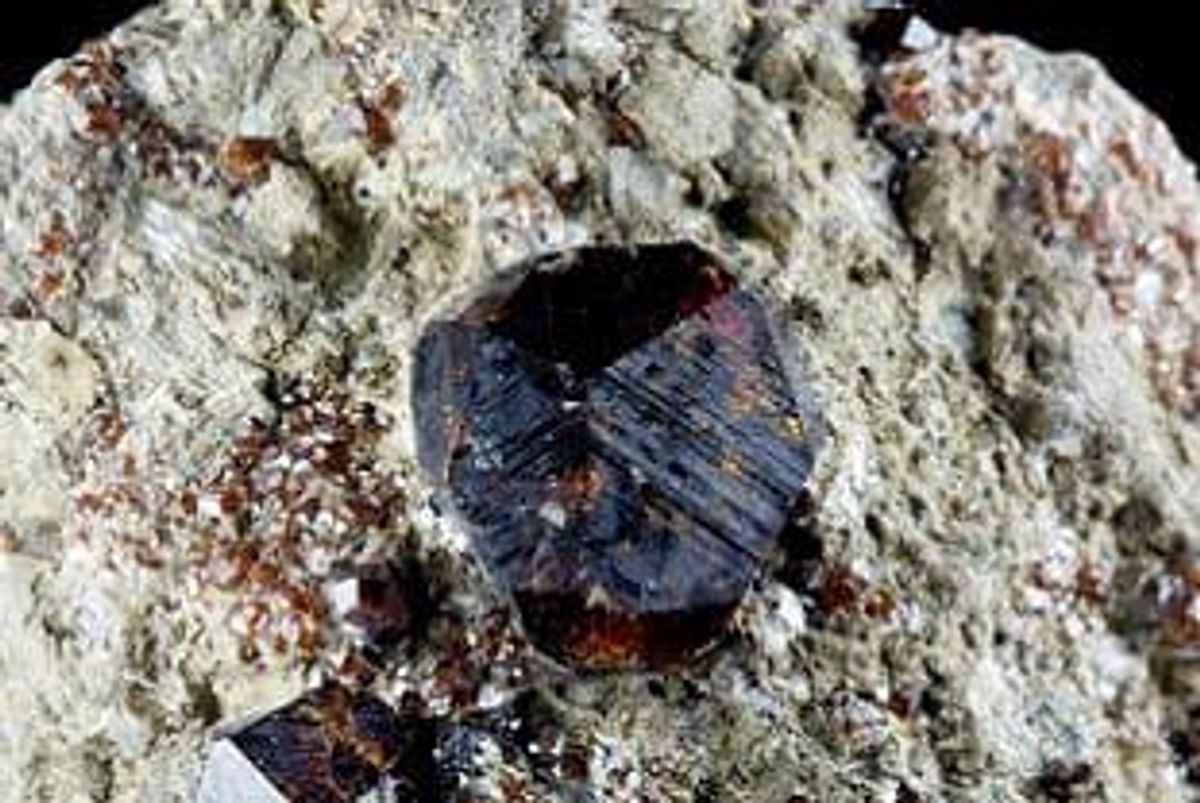Novel Exploration Techniques: Porphyry Copper Indicator Minerals

Over the past 20 years, geologists have been researching the application of indicator minerals as a mineral exploration tool. Indicator minerals are minerals whose presence provides clues into the possible location of a deposit if a mineral species of interest, such as copper, gold, or diamonds.
Over the past 20 years, geologists have been researching the application of indicator minerals as an exploration tool. Indicator minerals are minerals whose presence provides clues as to the possible location of a deposit of a mineral species of interest, such as gold, copper, or diamonds. Exploration using indicator minerals was first successfully implemented in the search for gold and diamonds. Recently, the application of indicator minerals in exploration has expanded and is now applied to tungsten, uranium, and copper exploration.
To narrow down the search for an economic deposit of minerals, geologists are increasingly examining the chemical and physical properties of indicator minerals. The chemical make-up of an indicator mineral can communicate to an explorer whether or not a mineral could be deposited under the same conditions as the indicator mineral being targeted. The physical appearance of an indicator mineral provide geologists with insight about the target mineral. For instance, the physical characteristics of a mineral that has been eroded from bedrock and transported to a new locale, can provide insight into the bedrock location of a mineral deposit.
Recent research has focused on the application of porphyry indicator minerals (PIMs), to pin-point the location of porphyry copper deposits “hiding” under large amounts of glacial till. PIMs are minerals that form during the formation of a porphyry copper deposit. The minerals used in PIM studies are resistate minerals, or minerals resistant to erosion. When these resitate minerals are found, they provide clues to the location of a nearby bedrock source of porphyry copper. Commonly used PIMS include apatite, rutile, garnet and titanite. These minerals, when formed or altered in hydrothermal porphyry environments, display unique physical properties such as color, size and shape that allow their presence to be used as a prospecting tool. In addition, the chemical compositions of PIMs can identify mineralizing environments that relate directly to specific alteration zones in porphyry systems. Geologists evaluate the presence, composition, amount, and proportions of PIMs found in surface materials such as glacial till, to better target concealed porphyry copper deposits.
PIM mineral studies are currently being applied in British Columbia, in areas where geologists theorized a valuable deposit of copper is covered by a large amount of till. The common occurrence of resistate minerals as alteration products in British Columbia porphyry copper deposits suggests that these porphyry indicator minerals (PIMs) could provide a key tool to the increase of exploration targeting success. The use of PIM is an important advancement in the use of indicator minerals for copper exploration, because the sulfide minerals typically known to be associated with copper deposits are not very resistant to erosion. By using resistate minerals as indicator minerals, copper explorers can narrow down the search area for a copper deposit even if the sulfide minerals have already been destroyed by weathering.
Research
PIMs have been successfully used in locating porphyry copper deposits in Australia, and are currently under research in North America to expand their effectiveness. In 2007, the USGS began a collaborative research project with Northern Dynasty Minerals (now the Pebble Limited Partnership, PLP) to conduct studies at Pebble porphyry Cu-Au-Mo deposit in southwestern Alaska. The Cretaceous Pebble deposit is concealed under tundra, glacial till, and Tertiary cover rocks. These USGS studies are part of a nation-wide research project on evaluating and detecting concealed mineral resources. PIMs are also being used in the Quesnel and Stikine terranes in central British Columbia. These terranes are highly-prospective hosts for porphyry copper deposits; however, exploration success in this area is limited due to thin, but extensive veneers of till and related glacial sediments that cover much of the area. Despite the discovery of the world’s top copper deposits, the Highland Valley Copper Mine, further exploration work in the region did not garner much interest due to the amount of glacial till covering the bedrock in the region. Past PIM research projects in British Columbia have provided a significant amount of new geochemical and geophysical data that warrant follow-up exploration efforts. In order to increase the understanding of the relation between PIMs and economic copper deposits, geologists are conducting analytical work to characterize the physical properties of resistate minerals such as relative abundances of mineral species, grain shape and grain size. Resistate minerals can fill gaps in the current exploration knowledge and have the potential to provide the missing link between ore deposits and glaciated sedimentary cover.